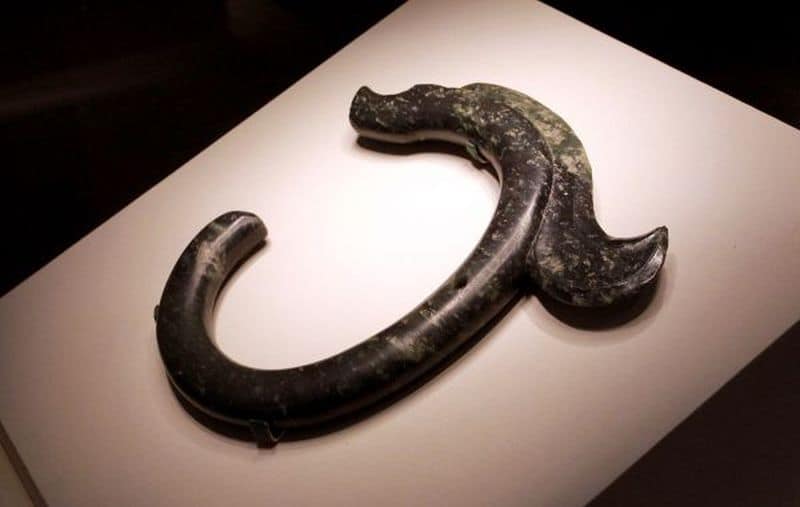The National Museum of China conserves a number of collections of immeasurable value. The purpose of this museum is to educate and enlighten visitors about the arts and history of China. The building was completed in 1959 to commemorate the ten-year anniversary of the founding of the People’s Republic of China. The museum was established in 2003 as a joint venture between the Museum of the Chinese Revolution and the National Museum of Chinese History. It is one of ten buildings built in the same year celebrating the anniversary. The National Museum of China houses a vast and extensive part of China’s history; both recent and very, very distant. There are five of our favorite items at the museum:
Li gui
The oldest Western Zhou bronze excavated to date is the Li Gui sacrificial vessel. It marks the earliest record of a bronze gift being given by a king. A gui is a Chinese ritual bronze, bowl-shaped vessel which was typically filled with grain and placed in ancestral tombs. The inscriptions on this particular round vessel with a square pedestal, commemorates King Wu of Zhou’s conquest of Shang. It also illustrates a Chinese system for recording days or years, known as the Sexagenary Cycle.
Jade Dragon
Jade is an ornamental rock which is generally associated with particular healing properties, but in the past it was also used in weapons. In China Jade was considered the ‘imperial gem’ amongst dynasties. In art, Jade was as valuable as gold and diamonds and was only used in the finest of objects. The Jade Dragon in the Museum of China is a fine example of the stone’s value as well as broader cultural imagery that was incorporated in its design. The dragon is synonymous with Chinese cultural practices and beliefs; a symbol of power and strength.
Green-glazed Lotus Vase
Ceramics are an important aspect of Chinese art. Chinese porcelain became so popular that even today many English-speaking countries refer to porcelain items as ‘china’. So much so that Cockney slang in London created a phrase ‘my old china plate’ which referred to one’s friend. It indicates someone who is precious, just as fine china was. The Green-glazed Lotus Vase is a prime example of the artisanship and talent that went into making these artworks. Traditionally, the lotus is Buddhist symbol for purity and fortune. The color green represents growth, renewal, and vitality. In this case, this particular vase would have been used to guide the spirits of the deceased.
Neolithic Stork Jar
Traditionally, colored jars were buried with community leaders. This specific piece of painted pottery is decorated with a stork, a fish, and an axe. The stork is a symbol of longevity because it is believed that storks live to be 1000 years old. The axe symbolizes power and the ability to punish; which leaders had the power to do. In Buddhism, the axe symbolizes the destruction of evil. The fish symbol is associated with strength, power, and profit. The use of white in the detail indicates a sense of mourning which further explains the purpose of this jar.
Guojizibai Water Vessel
During the Bronze Age in China, bronze was incorporated in many rituals. Bronze items were deposited in the tombs of nobility and royalty. These were intended to be taken into the afterlife with the deceased. One such example is the Guojizibai Water Vessel, which has engravings that tell the story behind the bronze piece.
Summary:
China has a rich history in art and human development. The National Museum of China pays homage to iconic pieces and preserves this past that was so important in shaping present-day China.


